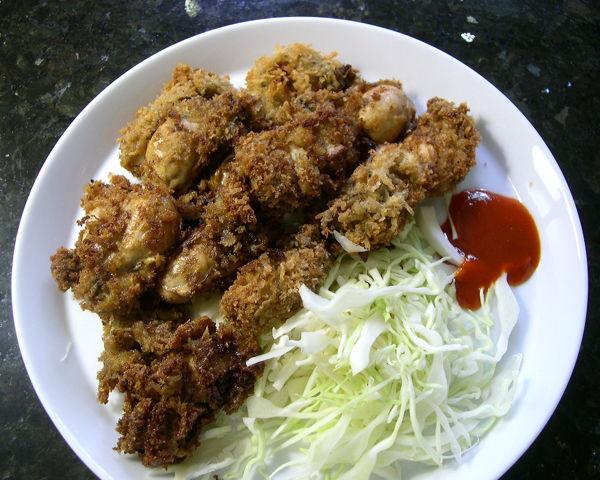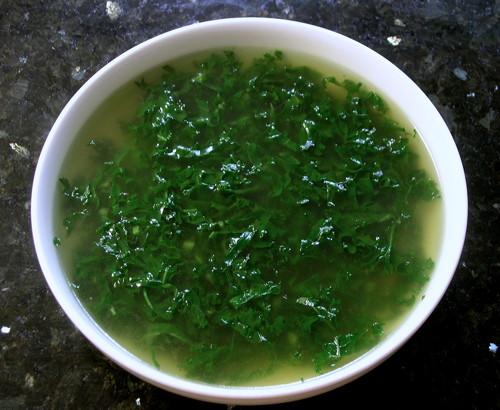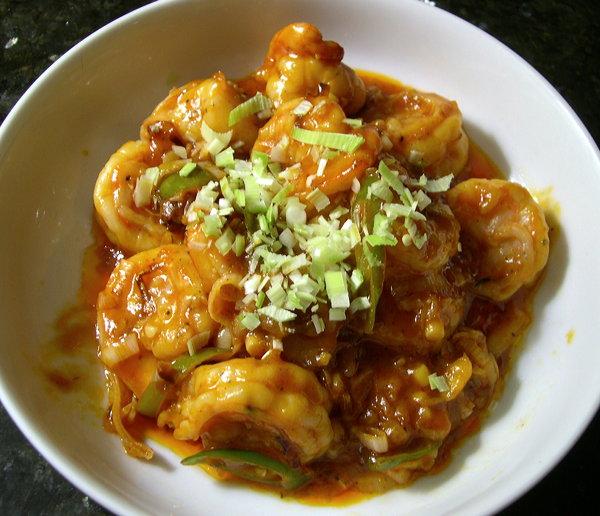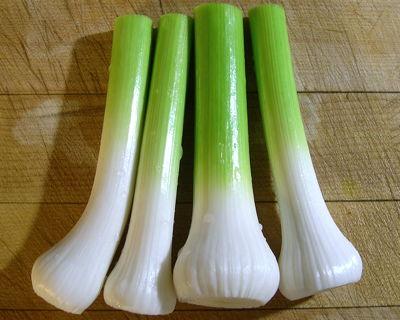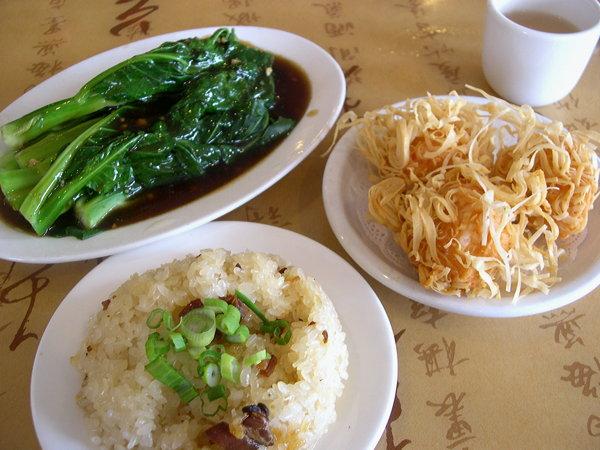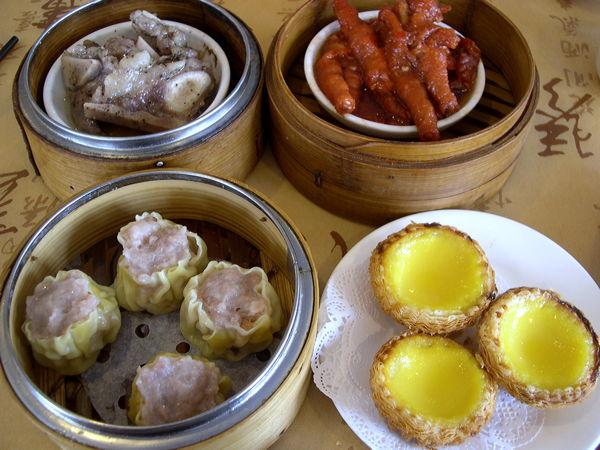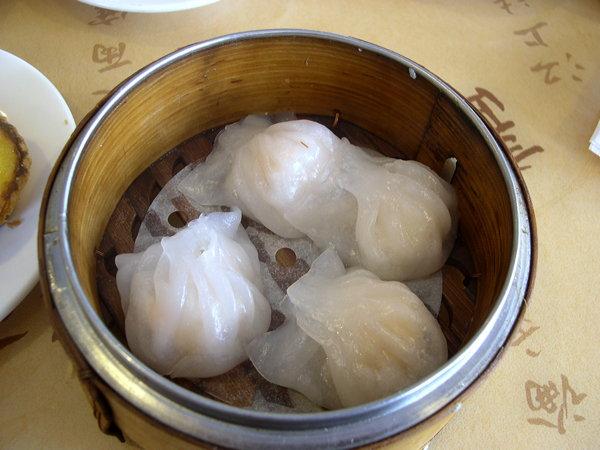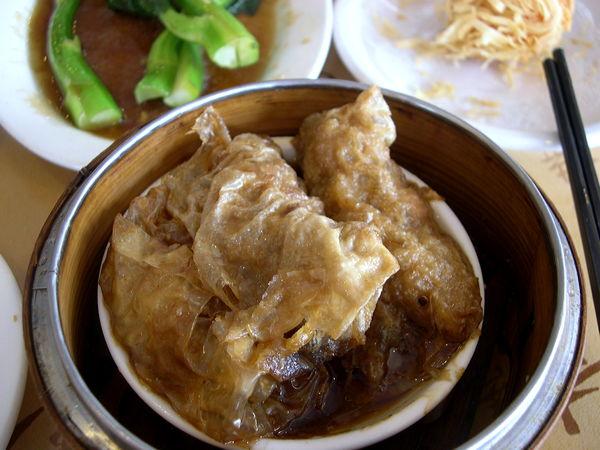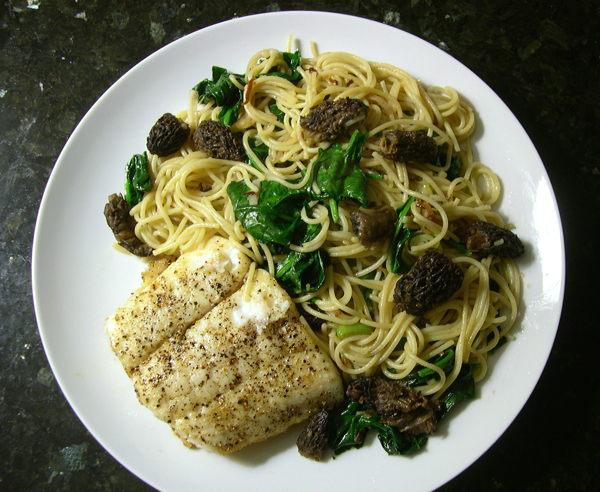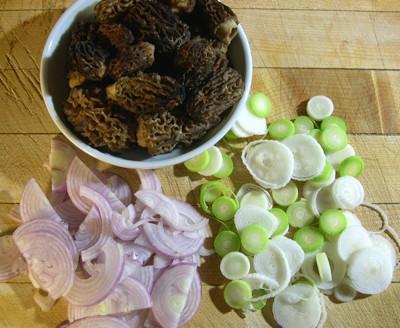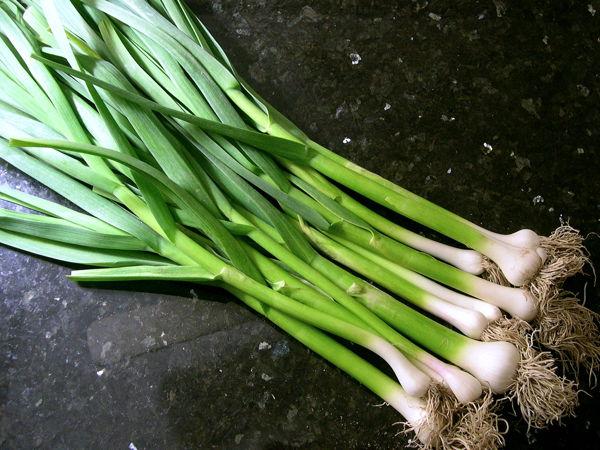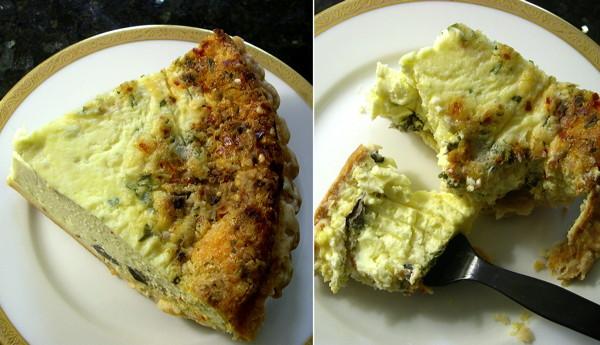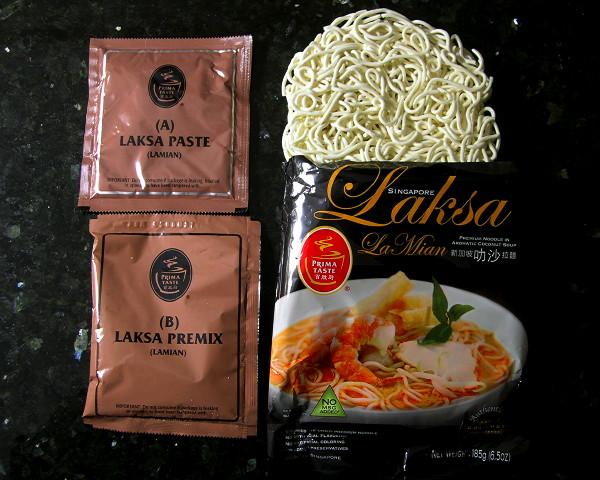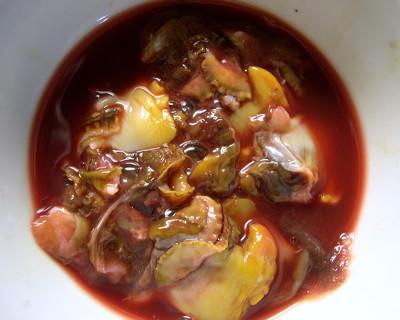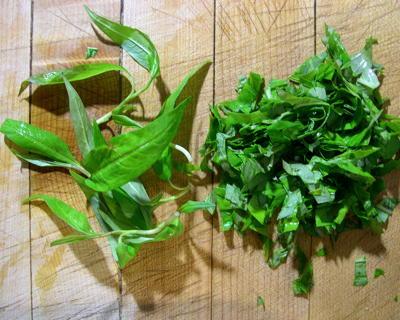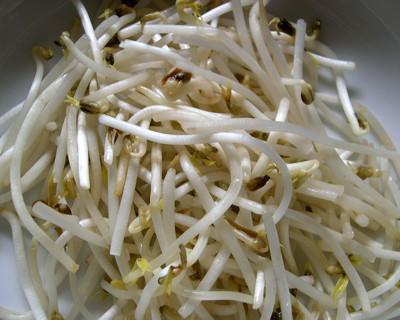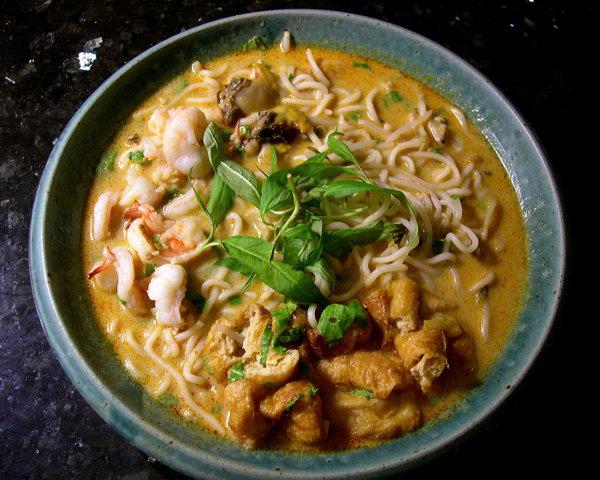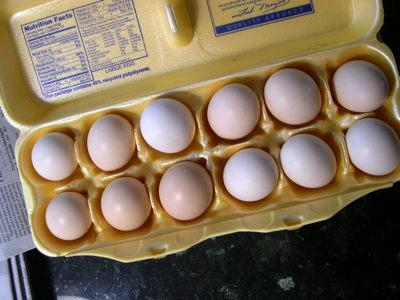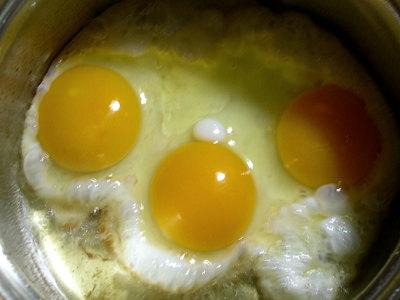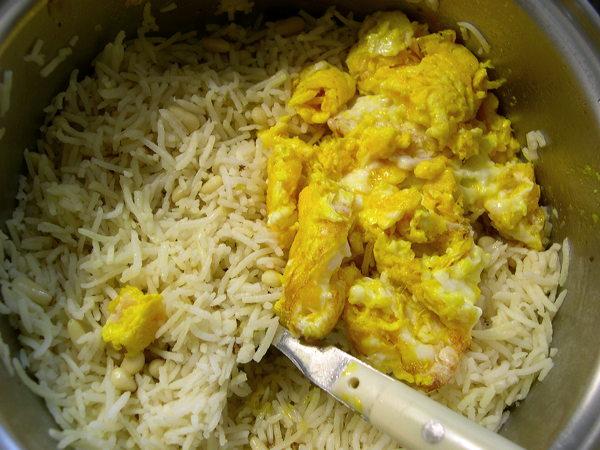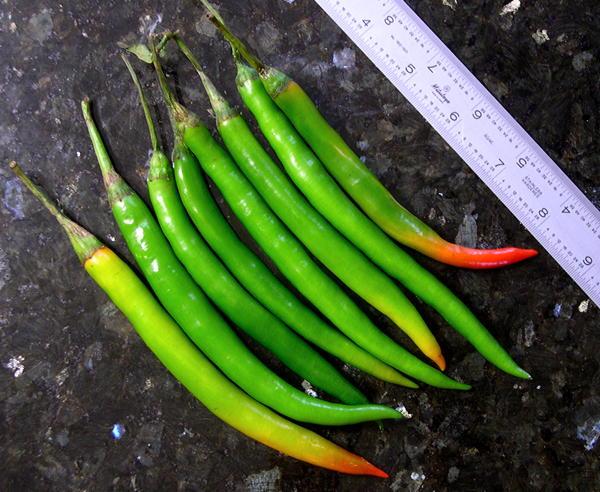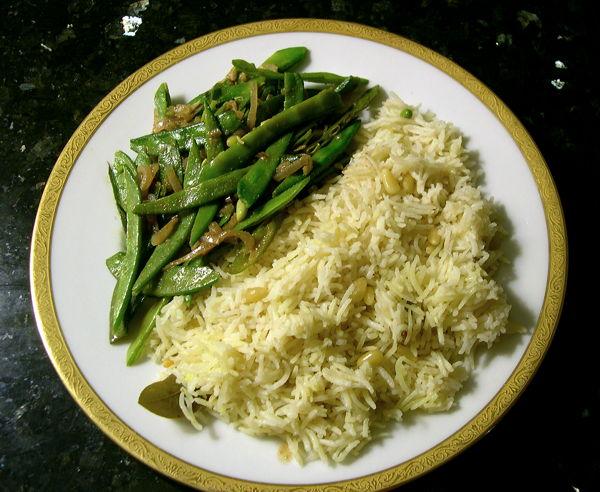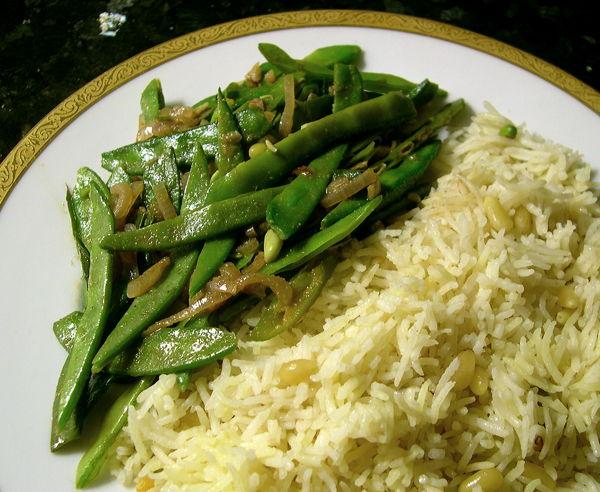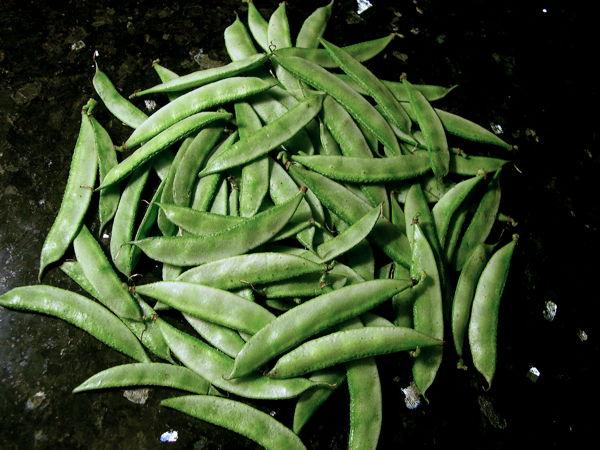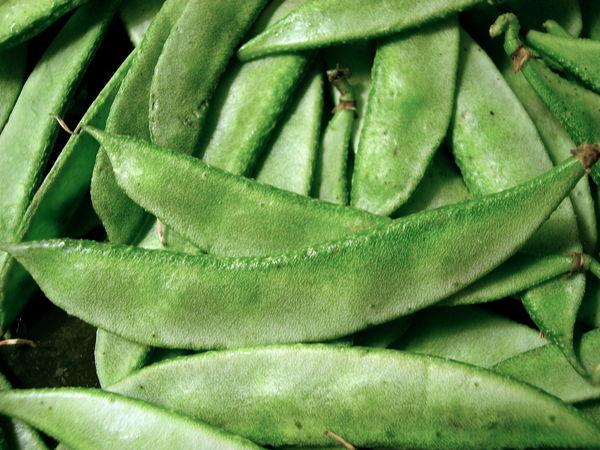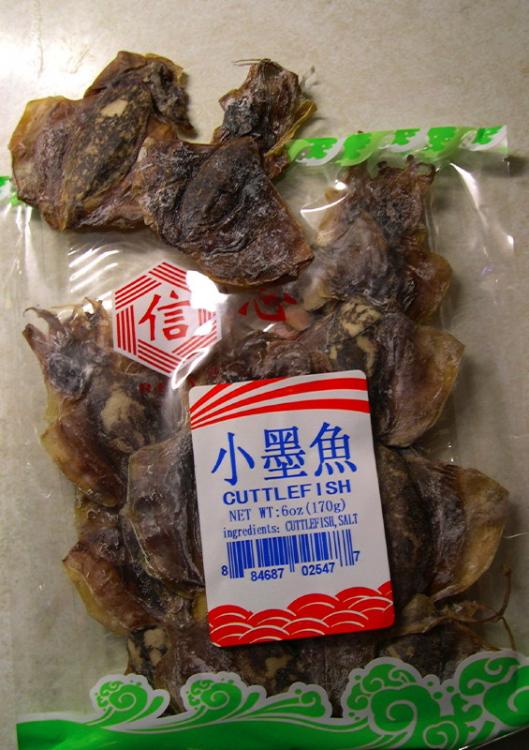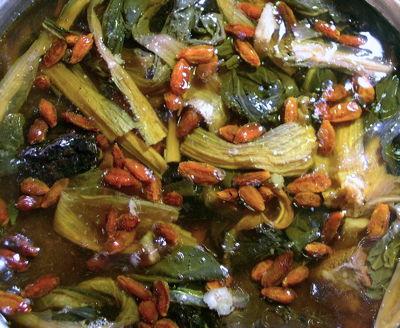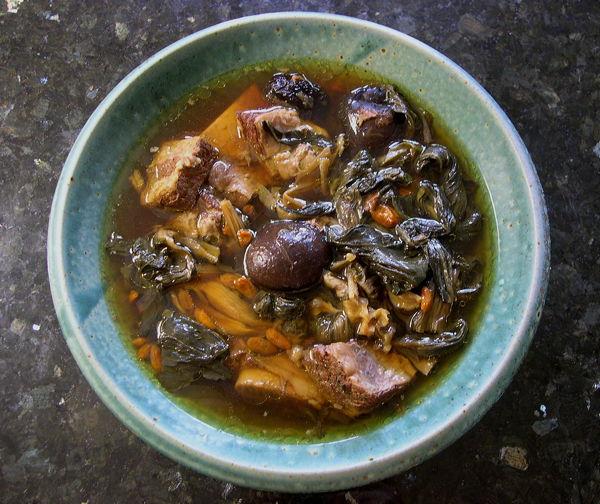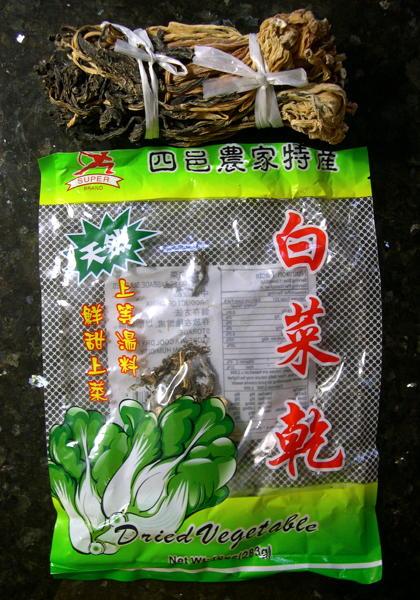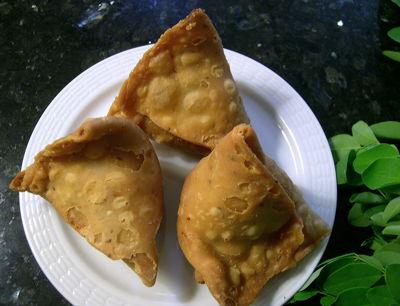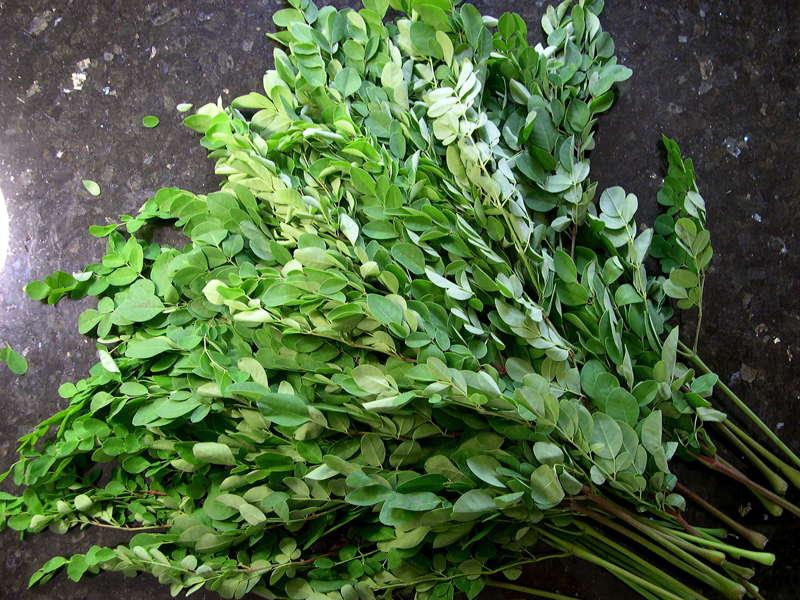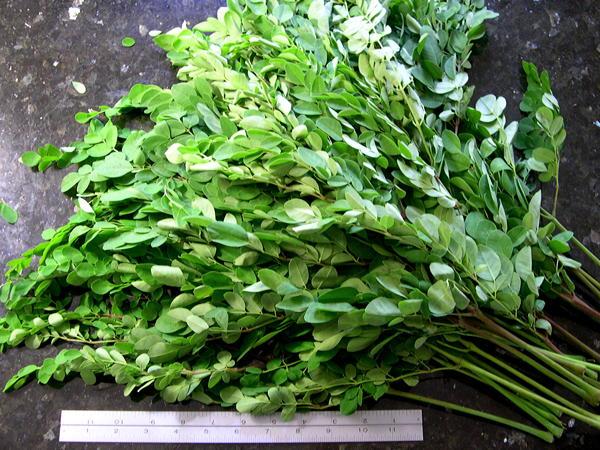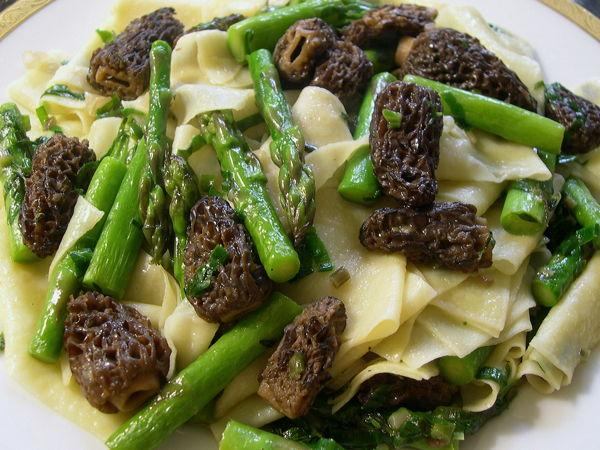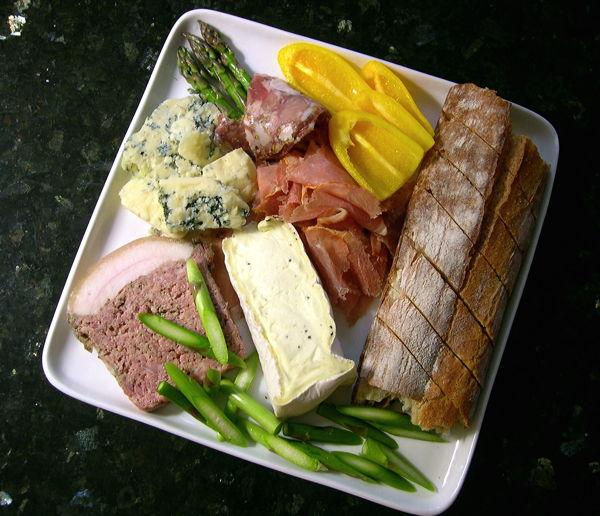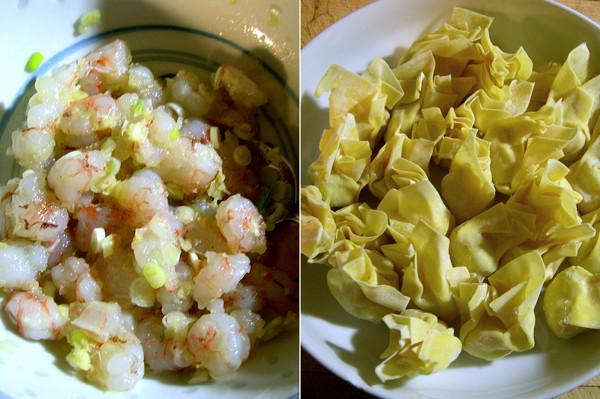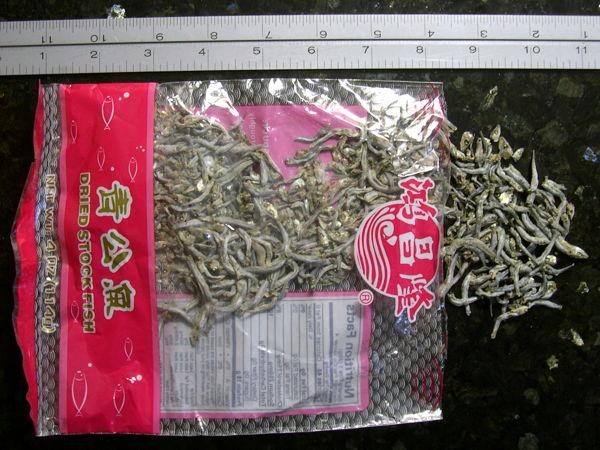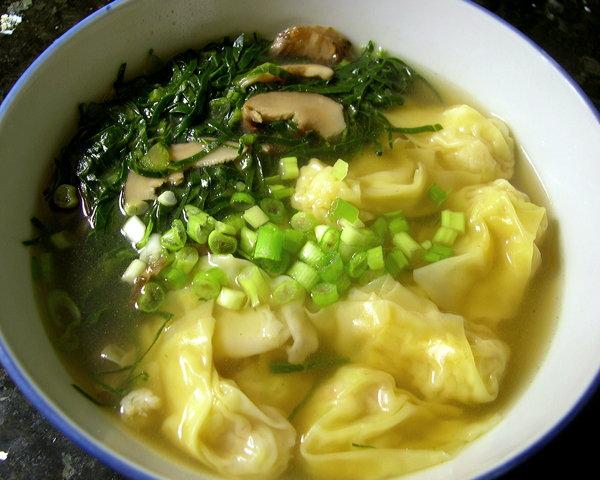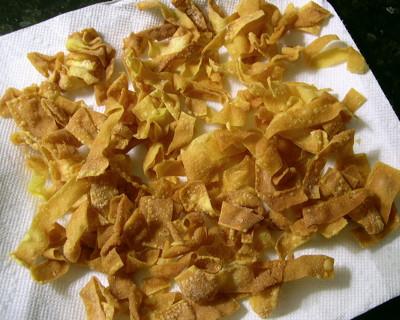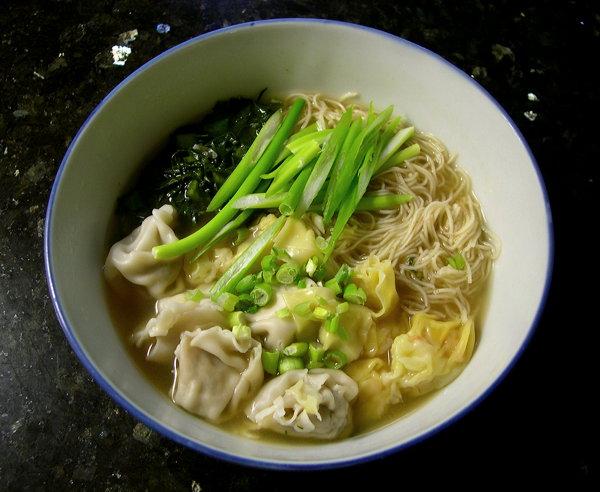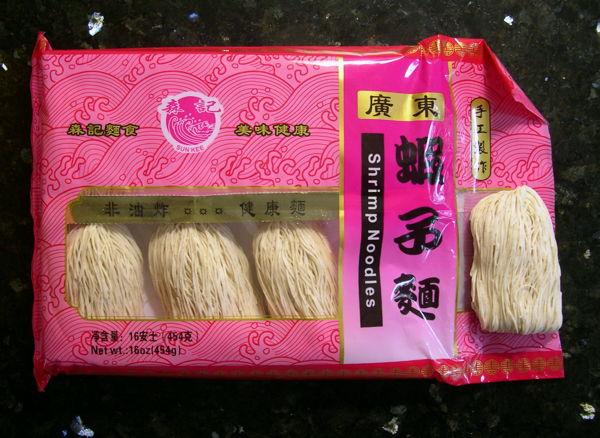-
Posts
3,810 -
Joined
-
Last visited
Content Type
Profiles
Forums
Store
Help Articles
Everything posted by huiray
-
Young, tender kale [Nading Farm], just 3-4 inches long; fresh pick of the new season. Julienned, wilted into chicken broth and simmered barely a minute or two more. Fried oysters [shucked fresh oysters from Caplinger's], with green cabbage & Lingham's Hot Sauce. (Egg dip, then a seasoned panko coating, before deep-frying) There were more.
-
Shrimp w/ tomato sauce & stuff. Large wild shrimp marinated w/ Shaohsing wine, corn starch, black pepper, salt, sugar, rice bran oil. Hot oil, shrimp sans marinade, fry briefly, remove & reserve. More oil into pan, sliced young garlic, sliced hot long/finger chillies, ketchup; reserved shrimp back in, toss, adjust seasoning, serve. Eaten w/ white rice. Trimmed young garlic:
- 495 replies
-
- 10
-

-

Indianapolis Restaurant: Reviews & Recommendations
huiray replied to a topic in The Heartland: Dining
A return visit to Szechwan Garden for dim sum. (See here for a previous report) Oyster sauce kai-lan, glutinous rice w/ smoked meats, fried shrimp balls. The kai-lan was OK (cf the last time). The glutinous rice dish was dried out and at other times would not be acceptable – but I did eat much of it because I was hungry and this was in the group of stuff first placed on the table). The shrimp balls, however, were quite good and I enjoyed them. One of the shrimp balls being consumed. Beef "short ribs" w/ black bean sauce; "phoenix claws" a.k.a. chicken feet in "special sauce"; egg tarts in flaky pastry; siu-mai a.k.a. pork meat dumplings. The beef ribs were less satisfactory than the last time - these were fairly chewy and didn't taste that great. The chicken feet were...OK. Not particularly noteworthy. The egg tarts were quite decent - this was one of only two dishes I polished off, in fact. The siu-mai was OK-to-nice...can't complain, except to note they were not the "lightest" in texture. Har-gow. Entirely edible. (But sloppily made) Bean curd dumplings. Supposedly "fu pei quen". Not good. I questioned them on what this was supposed to be - and one of the people responding did allow that it did not have bamboo shoots/slivers in it. That was a fatal mistake, because without the bamboo shoots the meat filling became a leaden block of hard pork, let alone if they could have made it "lighter" by either manipulating it suitably or, perhaps, not leaving it around so long, because it was also semi-dried out. I abandoned this. View of the place from my table. Quite full this day, but that may also have had something to do with it being Mother's Day. So – hits and misses, like the last time. Inconsistent, in my view, and not especially great dim-sum anyway, but Indy does not have great Chinese-Chinese food anyway. IMO. Location of the place on Google maps. ETA: I'll add that at the end of the meal I commented quietly to one of the apparent supervisory staff about the dissatisfactory nature of some of the dishes. He simply murmured "sorry about that" but made no motion or attempt to rectify the situation and just walked away. Oh, I paid for the whole thing in full and gave them a tip anyway (US$56, for a less-than-thrilling meal) - but customer satisfaction might not be fully realized with their approach to things. ETA2: It is interesting to compare the appearance of the chicken feet, the bean curd dumplings/rolls and the beef short ribs from this meal against the ones I was served on the previous visit (see link above). Yes, their appearance tallied with how they tasted, how they were when eaten – all three were better the previous time. -
I would suspect those "fresh"" peas are now pretty starchy and getting more so by the day (and even hour). Fresh peas are best when cooked and eaten within 24 hours or so of being picked. The longer they are held, the more the sugars get converted to starches. Their flavor and texture depend on how "old" they are. (Which is why frozen peas are often really good, as the better brands shell and freeze the peas within hours of picking) So - how to cook them? here's Francis Lam's take on it: http://www.salon.com/2010/05/15/how_to_cook_peas_fresh_frozen_tender_starchy/
-
Pan-fried halibut. Sautéed morels & young garlic & shallots, w/ spinach and tossed w/ fedelini. The halibut (2 pieces, about a pound total) [from Caplinger's], patted dry, was simply sprinkled w/ sea salt & ground black pepper then pan-fried w/ EV olive oil [California Olive Ranch]. Sliced young garlic (see below) & sliced shallots were sautéed in the pan fond & remaining oil, morels [last batch picked up from IWFM] added & tossed around; then fresh spinach [Nading Farm] added and just barely wilted in before adding fedelini [De Cecco] straight from the pot it was cooked in. Everything was stirred in, and drizzled with a little Arbequina EV olive oil [California Olive Ranch] and served with the halibut. (The second piece of halibut was devoured as well. :-) ) On the way there: The young garlic used above were two heads from those below [from East Asia Market] trimmed of roots & most of the upper parts.
- 495 replies
-
- 15
-

-
A nice slice of bacon-cheddar-herbs quiche, from Taste Cafe (via BRFM). Eaten w/ handfuls of freshly plucked & washed spinach leaves [Nading Farm] (via CFM).
-
I loved, LURVED The Coliseum in my time there, and was always so grateful when my father took us out to the place. Their tit-pan steak (steak served on a HOT iron plate w/ sauce poured over it AT THE TABLE in front of you) was always such a treat and joy. There are even cartoons about the "regimen" of lifting up the edges of the white linen table cloth over one's front as the sauce was poured over the sizzling-steak-in-the-hot-plate. I, myself, chose (even when young) to use the (linen) napkins instead. :-) BTW, for those interested, this place was an avatar of what is called Colonial Hainanese Cuisine in Malaysia. Their mulligatawny soup was another wondrous thing. See here for a thread on this place. :-) ;-) ETA: PS - that was Batu Road, before the overzealous-colonial-era-scrubbing-govt-committees got to work renaming streets in KL.
-
Have a look here. Also, on CH there are several old threads which talk about Chinese-origin or Texas-origin crab meat being substituted by many supposedly-reputable sellers that advertised them as "Fresh Maryland Blue Crab Meat", even when it was out of season. Including restaurants offering "Maryland Crab Cakes".
-
@liamsaunt, they taste somewhat more "clammy" with an "iron-y"/mineral-y edge to them. Appropriate to their containing hemoglobin. For some people the taste might be a little too "strong" or fall into the category of "challenging". I urge you to pick some up next time from that fishmonger you talked about, notwithstanding the protestations of your sister, and try them out for yourself. Well, what I can also say is that they are consumed readily by vast swaths of the population in E and SE Asia, and are an integral and essential component in many dishes too, meaning the dishes as executed in E/SE Asia (and not the Americanized versions). :-) ETA: Perhaps one might also approach the issue of their "bloodiness" by reminding folks that rare steak also oozes BLOOD in all its RED GLORY. Yet folks greedily consume that bloody item – so, regard these blood clams in the same frame of mind.
-
"Singapore Laksa La Mian" [Prima Taste] (this one) (or look here), augmented with chopped fresh daun kesum (a.k.a. Vietnamese coriander), tau pok each sliced in two, mung bean sprouts & large wild shrimp (each halved lengthwise), plus shucked fresh blood cockles** (or clams?) right at the end. ** I suspect these may well have come from Cape Cod (see here for an article on them) and may or may not be bearded ark clams alternatively. Other US East Coast locations are certainly possible. Blood cockles are grouped under ark clams, it would seem. On the way there: Bowled & garnished w/ sprigs of daun kesum. It's only recently that I've seen fresh, live blood cockles/clams in these parts. These are considered by some to be essential for a bowl of curry laksa, including laksa lemak, whether Nyonya-style or KL-style or Katong-style or whatever (They DO NOT go with assam laksa). I for one missed having a bowl or two of laksa with fresh "see hum" (rendition in Cantonese for this type of cockle) in the USA – remedied now. (Frozen packaged pre-cooked blood cockles are available - they are seldom good) They are also widely known as 血蚶 in Chinese, literally "blood clam/cockle". (I styled this rendition with thoughts of Katong Laksa in mind, keeping the ingredients to what would go into that style, but this is NOT a true bowl of "Katong Laksa") ETA: These fresh blood cockles were appreciably larger than the traditional "see hum" seen/found and used in laksa and in many other dishes (e.g. char kway teow) in SE Asia. These were around 2½ inches across on average, with bearded shells (see the picture), whereas the "see hum" usually found in SE Asia tend to be only 1½ inches across or so and usually have unbearded/"clean-shaven" shells. I've posted earlier renditions of augmented (and un-augmented) "Prima Taste Singapore Laksa La Mian" here on eG. See here for a summary for some and links to the various posts.
-
Picked up Black Silkie chicken eggs from a local Chinese grocery [East Asia Market]. Eggs from the breed are small, with little white but large orange yolks. Fried/scrambled some up and ate them with the rest of the "gussied-up rice" from here.
-
shain, you are too kind. Thanks. There are others who also create wondrous spring meals too. (and at other times) Look at mm84321's posts, for example.
-
Justin Devillier won the 2016 James Beard Foundation award for Best Chef: South. http://www.jamesbeard.org/blog/2016-james-beard-award-winners
-
These. Part of a bag of these chillies I brought home, selected from two large racks/bins of them; most of them not in the photo of course. I used a couple of the chillies (un-deseeded), sliced up, in the valor beans dish. Also from an Indian grocery, but no doubt widely grown in many places.
-
@Thanks for the Crepes, you're welcome. Valor beans come in a round form also. They do indeed have a more bumpy and uneven surface than snow peas, with ridged bumps along the edges too (look again at the photos). These also have a very distinct darker green shading at the top edge suffusing downwards for a short distance (see photos). I think they are beautiful. They do also have a more "meaty" bite/texture/body, not exactly "tougher", but, yes, more like pole beans – whereas snow peas tend to be much more "watery" and crunchy. They have a more "vegetal"/green taste than snow peas, with a sort of very vague spicy edge to it. I like them. Generally they *will* need to be de-stringed, topped and tailed, as I mentioned, unless they are very young beans; or unless you like the strings (as roughage, maybe). I wouldn't eat them raw, though – I'd cook them. Here's what I did with most of them last night. Topped & tailed, de-stringed, cut into halves lengthwise. The seeds in the older ones are not insubstantial. :-) Soak for a bit. Hot pan, peanut oil, sliced shallots, chopped smashed garlic, curry leaves (Murraya koenigii), ground cumin seed, chopped hot long finger chillies, then the prepped valor beans. Stir around. Salt it. Add some water, cover, cook; stir around (cover off/cover on) till done as desired. I served it with gussied-up rice. Hot peanut oil, chopped garlic, Basmati rice [Z Reserve], stir around, chicken stock, water, green cardamom pods, dried bay leaves, pine nuts (I couldn't find my shelled pistachios). Cook in the usual manner (stove top) till done. Close-up. I had seconds. Burp. ETA: Another difference between these beans and snow peas – they are forgiving towards longer cooking and retain their "meatiness" although they get progressively softer but without falling apart. Snow peas, for me personally, *have* to be eaten quickly after cooking, and they do not withstand overcooking or being a component in "leftovers" from a dish – they turn to mush and usually acquire a nasty off-putting smell and texture. To me, anyway. I would use these valor beans instead of the usual beans in, say, something like fagiolini al pomodoro, or fagioli corallo al pomodoro (see here, here, here, here too)...whereas I would NOT use snow peas in these dishes.
-
Crepes, I was poking around in my fridge thinking about what to cook and I remembered the flat valor beans I picked up today. I've talked about them elsewhere on eG but I pulled them out and here they are, another "Indian Vegetable": The whole bean in the middle of the picture is about 4 inches in length, to give you an idea of their size. Yes, I find they need to be topped and tailed, at least with the fresh stuff I get around here, before cooking or I will get a dish where "extra work" is needed while eating. Have you seen these in your local Indian shops?
-
Choy Kon Tong (菜乾湯). (soup, with dried cole/dried vegetable = dried bok choy, 白菜乾) On the way there, in the pot, after addition of the last ingredients. Pre-soaked trimmed dried cole (see below), fresh water plus some of the vegetable soaking water, beef short ribs [Becker Farms] trimmed of excess fat, sea salt, a dried cuttlefish (小墨魚乾) (see here for an example of what I used; but a different brand), simmer, skimming a bit. Pre-soaked dried Chinese mushrooms ("heong koo" (香菇) variety this time), simmer; later on dried "black jujubes" (黑棗) and dried wolfberries (枸杞子) also went in. Seasoning adjusted, simmered till done, topped up with water at times. Total time around 5-6 hours for this iteration of the soup. A portion of the finished soup. The "dried vegetable" used. I used one of the two bundles in the soup above. The clustered plants are eased apart, the bottoms of the stems broken off and the dried leaves+stems snapped into shorter lengths as appropriate then soaked in water for a while, shaking gently occasionally (grit & detritus falls to the bottom), then retrieved & excess water squeezed off. Oh, I also had some potato & peas samosas (made locally) picked up from Patel Bros. :-)
-
Yes, that's it. Note that the leaves are also edible and used in many cuisines. Somewhere here on eGullet I've posted a Pinoy soup I made using Moringa leaves...and the leaves are even less frequently found in these parts than the drumsticks. I was in the Castleton (Indy) Patel Brothers store today looking for green amaranth. The stuff they had was pretty sad. BUT --- they had beautiful Moringa leaves ("drumstick leaves"). Not sure yet what I'll do with them. Maybe a Burmese or Thai soup...or a malunggay omelette...or something from the Malay or Nyonya repertoire...
-
Morels, asparagus, ramps, thyme, tagliardi. On the way there: Alziari EV olive oil, Sèvre & Belle Charentes-Poitou Beurre demi-sel, sliced ramp bulbs; morels, thyme; asparagus, sliced ramp greens; just-cooked Cipriani tagliardi; toss/stir in pan, serve.
- 495 replies
-
- 21
-

-
Cheese & charcuterie plate. From bottom-left going clockwise: Pâté de Campagne [Smoking Goose; "limited edition" batch], EWE CALF to be KIDding cheese [Hook's Cheese; scroll down the webpage], the last piece** of Salame Cotto [Smoking Goose], Lomo (basically a Lomo Embuchado) [Smoking Goose], Fromager d'Affinois Truffes [Fromagerie Guilloteau]. All from Goose the Market. Plus raw local asparagus, sweet yellow mini-peppers, Francese bread [Amelia's]. ** I gobbled up the rest of the half-pound I got just the other day with ripped-off pieces of bread, heh. Can't remember why I left one piece.
- 495 replies
-
- 12
-

-
Made shrimp wontons with most of the rest of the rock shrimp I got the other day. In process. Shrimp tossed w/ finely chopped scallions (white parts only), grated ginger w/ the juices, bit of Shaohsing wine, some Maldon salt, some sugar, some cornstarch, fresh ground white pepper, bit of rice bran oil. Made wontons using Hong Kong style (relatively thin) square wonton wrappers [Twin Marquis]. Made soup/broth – chicken & shrimp stock diluted w/ water, some oil added, simmered w. small dried "stock fish" (see below) & dried thick-cap Chinese mushrooms plus saved stems for maybe 3/4 hour; seasoning adjusted. Filtered, mushroom caps retrieved & sliced. The dried "stock fish". Wontons cooked simply in simmering water. Chiffonaded young collard greens simmered w/ the sliced mushroom caps in the broth, then bowled w/ the cooked wontons & garnished w/ chopped scallions. Wonton wrappers cut into strips then deep-fried eaten alongside. Leftover wontons cooked for a subsequent meal, augmented w/ "Chinese Spinach & Pork Wontons" [Prime Food] & bowled w/ leftover broth/soup & collard greens sans mushrooms. Added in a bundle of "Shrimp Noodles" [Sun Kee] (see below) and topped it all with more scallions, green parts. The shrimp noodles. These are hand-made ("手工製作"), non-fried ("非油炸") (air-dried instead) Cantonese type shrimp noodles (廣東蝦子麵). Declared to be "health (=healthy) noodles", heh. ("健康麵") Cooked by simply simmering in water using chopsticks to gently ease apart the bundle as it softens. Do not overcook - this one will fall apart/turn to mush if done so. (Listed ingredients are but four - flour, egg powder, shrimp, water.)
- 495 replies
-
- 10
-

-
Sorry to hear about your kitchen troubles, Crepes. Hope to read of your cooking exploits again soon.
-
Crepes, yes, the term is as Liuzhou described. Thanks, Liuzhou. (N.B. the ideogram "蚵" is the commonly used character in Hokkien (see the wiki article Liuzhou linked to) for oyster. The standard Chinese character is "蠔" (traditional) or "蚝" (simplified) for oyster.) That it is an "omelet" is not directly stated but when one says "oh chien" in Malaysia or Singapore it is understood to be a fried oyster omelet/omelette. There are many variations with each hawker and each household seemingly having their own version, although there are two basic styles (crispy or slightly gooey) and the essential components need to be there for it to be called "oh chien". I believe "oh chien" also tends to suggest a Penang variation (or a Penang Hokkien derivation) whereas "or chien" tends to suggest a Singaporean variation (or a Singaporean Hokkien derivation) but usually both terms/pronunciations are mutually understood as the same dish. ETA: @Thanks for the Crepes and @kayb, take a look too at this old post on eGullet. Liuzhou also posted about other oyster preps in Chinese cuisine as did other posters. This poster/post on that same thread/topic also referred to oysters as a CNY dish - apropos to what I reported having in my "Opening the Year" meal here on eG recently.


